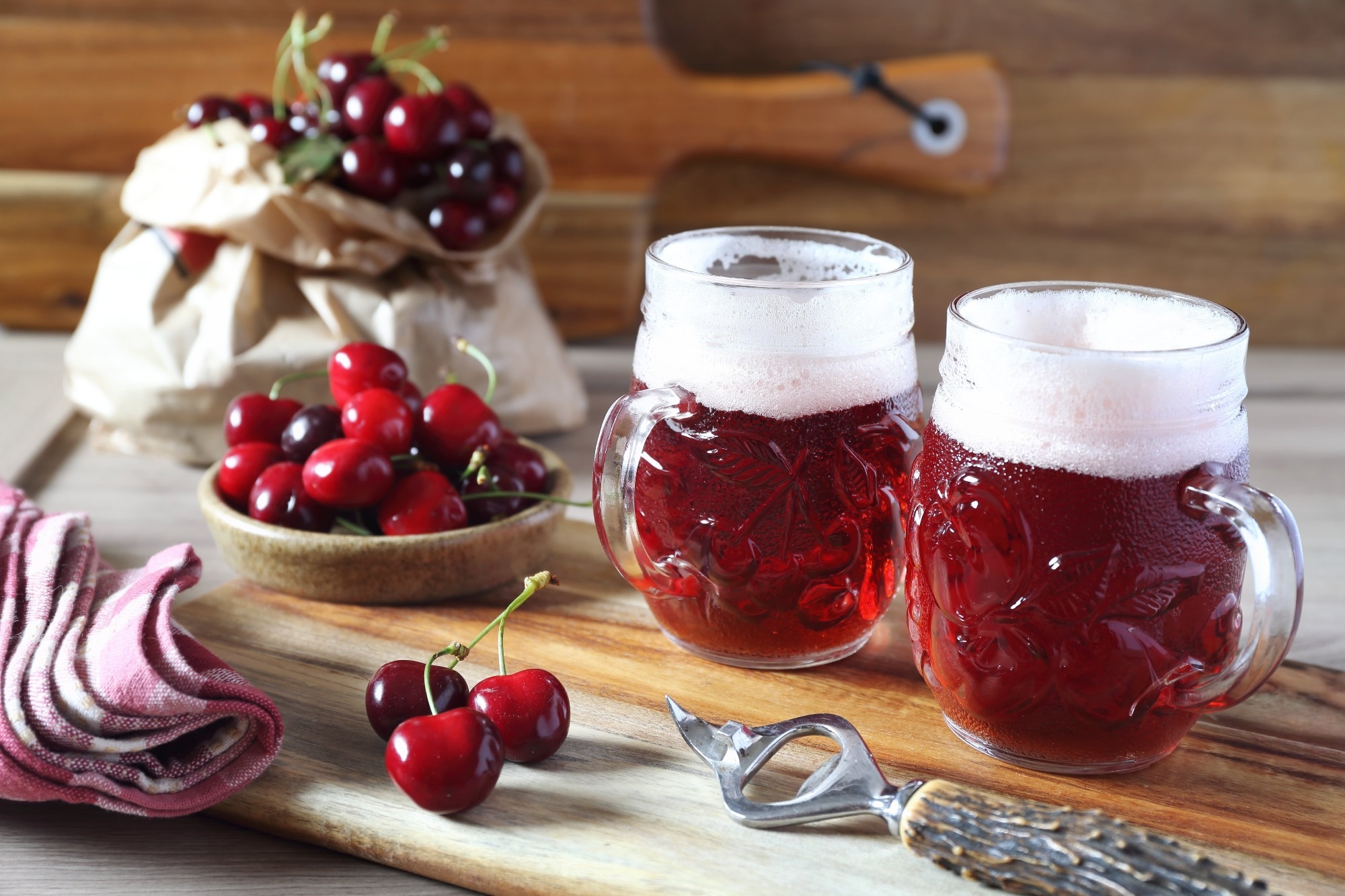Beer is a universally enjoyed beverage. Sour beers, known for their tangy acidity, are produced through fermentation by specific bacteria and yeasts.
In a recent study published in the Journal of Agricultural and Food Chemistry, a research team from Norway explored an innovative approach for speeding up the traditionally lengthy sour beer production process by using pea-derived raffinose-family oligosaccharides (RFOs).
These RFOs, extracted from pulses, serve as a carbon source for lactic acid bacteria, promoting faster fermentation. The study examined their potential to improve beer characteristics, such as acidity and flavor, while avoiding the typical off-flavors associated with pulse-derived ingredients.
 Study: Pea-Derived Raffinose-Family Oligosaccharides as a Novel Ingredient to Accelerate Sour Beer Production. Image Credit: photosimysia/Shutterstock.com
Study: Pea-Derived Raffinose-Family Oligosaccharides as a Novel Ingredient to Accelerate Sour Beer Production. Image Credit: photosimysia/Shutterstock.com
Beer Brewing
Sour beer production typically relies on wild fermentation or a combination of specialty yeasts and bacteria, with fermentation times extending over a year for traditional styles such as Lambic beer.
These extended timelines, coupled with the challenge of maintaining consistent quality, have driven the search for more efficient brewing methods. Additionally, the brewing industry faces growing concerns about raw material shortages and climate change, which may drive up the costs of traditional ingredients.
Pulses, such as peas, are emerging as a potential solution due to their sustainability benefits. They are rich in protein, play a role in nitrogen fixation, and are suitable for growth in colder climates, making them an attractive alternative to conventional brewing resources.
Previous studies have shown that oligosaccharides from wood can act as a selective carbon source for lactic acid bacteria, presenting an opportunity to streamline the sour beer production process. However, the role of pulse-derived RFOs in brewing has remained largely unexplored.
The Current Study
The present study used pea-derived RFOs as a carbon source for brewing sour beer by selecting suitable lactic acid bacteria that could thrive in RFO-enriched media.
The researchers tested 14 lactic acid bacteria strains for growth in media with and without RFOs to identify the strains that grew well with RFOs and also showed tolerance to isomerized α-acids and ethanol, which are common stressors in brewing.
Strains such as Lactobacillus brevis, Lactobacillus rhamnosus, Lactococcus cremoris, and Pediococcus damnosus were selected for further testing. After confirming their tolerance to stress factors, these strains were used to brew beers in combination with Brettanomyces claussenii yeast, to produce sour beers similar to traditional Belgian-style beers.
The study involved fermenting the wort, which is the sugary liquid that provides food for the yeast, with RFOs and comparing it to beers without RFOs, both physically and sensorially.
After fermentation, the beer samples were analyzed for chemical, physical, and sensory properties, including pH, acidity, volatile compounds, and residual sugars.
The study also utilized various methods, such as high-performance liquid chromatography and gas chromatography, to measure organic acids and volatile compounds for a detailed chemical characterization of the beers.
The goal was not only to determine whether RFOs could accelerate fermentation without negatively impacting the sensory qualities of the beer but also whether the common "beany" off-flavor associated with pulse-derived ingredients could be eliminated.
Major Outcomes
The researchers found that RFOs enhanced the fermentation by promoting higher acidity and more pronounced fruity flavors in sour beers. Beers fermented with RFOs had significantly higher lactic acid levels compared to non-RFO beers, with one batch showing increased acetic acid as well.
The addition of RFOs also increased the overall acidity, which was reflected in sensory evaluations, with RFO beers having a more intense acidic taste. However, RFO beers also exhibited lower ethanol content compared to those fermented with Saccharomyces cerevisiae, indicating a more controlled fermentation process.
Notably, the beers with RFOs had reduced residual maltose levels, suggesting improved fermentation efficiency.
While RFO beers were comparable to traditional sour beers in pH and overall acidity, they stood out due to their enhanced fruity flavor, which the researchers believe is likely a result of elevated levels of ethyl acetate and acetaldehyde, both of which impart fruity notes.
Additionally, the sensory analysis confirmed that RFO beers were rated higher for fruity flavor, with a lower intensity of beany flavor than the commercial reference. The use of RFOs also prevented the typical off-flavors associated with pulse-derived ingredients.
Despite these improvements, some differences were noted between RFO beers and traditional commercial sour beers, particularly in terms of bitterness and malty flavor.
This indicated that further optimization of the brewing process and ingredient adjustments could help bridge the gap and improve the final product.
Conclusions
Overall, the results demonstrated the potential of pea-derived RFOs as a valuable ingredient for accelerating sour beer production. The study found that RFOs promoted efficient fermentation, enhanced acidity, and improved flavor profiles without introducing undesirable off-flavors.
The researchers showed that by using RFOs, brewers can create sour beers in a shorter time while maintaining desirable sensory characteristics.
These findings have opened the door to new, sustainable applications of pulse-derived ingredients in the brewing industry that can improve both production efficiency and product quality.
Journal reference:
-
Garbers, P., Brandal, H. A., Skeie, V., Karlsnes, Gard W, Varela, P., Tyl, C., & Westereng B. (2025). Pea-Derived Raffinose-Family Oligosaccharides as a Novel Ingredient to Accelerate Sour Beer Production. Journal of Agricultural and Food Chemistry. doi:10.1021/acs.jafc.4c06748. https://pubs.acs.org/doi/10.1021/acs.jafc.4c06748